J Neurosci. 1993 Oct;13(10):4146-56.
Abstract
Brain-derived neurotrophic factor (BDNF), a member of the neurotrophin family, supports the survival of developing basal forebrain cholinergic neurons in vitro and is retrogradely transported by cholinergic neurons of the medial septum and diagonal band following intrahippocampal injections in vivo. To substantiate a potential role for BDNF in the maintenance of forebrain cholinergic neurons in the adult brain, we assessed the ability of BDNF to sustain the phenotype of medial septal cholinergic neurons following a unilateral transection of the fimbria. BDNF, NGF, or vehicle solutions were infused continuously in adult female rats either into the lateral ventricle (intracerebroventricularly) or directly into the septum for 2 weeks beginning at the time of the transection. In vehicle-infused animals, only 28% of the ChAT-immunoreactive neurons remained on the side ipsilateral to the lesion compared to the contralateral intact side. When infused intracerebroventricularly, both BDNF and NGF reduced the extent of the phenotypic loss, in that 44% and 68%, respectively, of the ChAT-immunopositive neurons remained on the lesioned side. Intraseptal infusion proved even more effective, in that following BDNF and NGF treatment 60% and 86%, respectively, of the normal complement of ChAT-immunopositive neurons were apparent on the side ipsilateral to the lesion. Similar results were obtained when an antibody to the low-affinity NGF receptor was used to identify the cholinergic neurons. To determine if the apparent greater efficacy of NGF compared to BDNF might be related to differences in delivery, we examined the patterns of distribution of radiolabeled BDNF and NGF injected into the lateral ventricle. 125I-BDNF showed only very little diffusion from the ventricles into the adjacent neural tissue and negligible retrograde labeling of the neurons within the basal forebrain. 125I-NGF, however, diffused readily into the brain, resulting in widespread retrograde labeling of basal forebrain neurons. A similarly limited distribution pattern was observed where BDNF was detected immunohistochemically in animals infused intracerebroventricularly (12 micrograms/d) for 2 weeks. In contrast, when delivered intraseptally, the same dose of BDNF exhibited a widespread diffusion within the surrounding neuropil and retrograde labeling of neurons in the medial septum and the vertical limb of the diagonal band. Thus, when delivered effectively, BDNF has a substantial capacity to rescue axotomized cholinergic neurons.


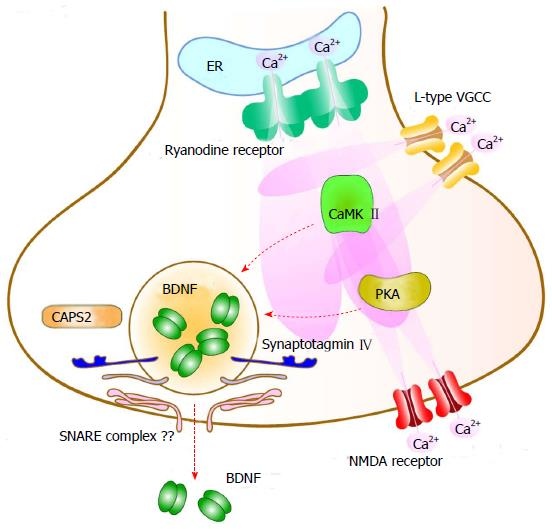
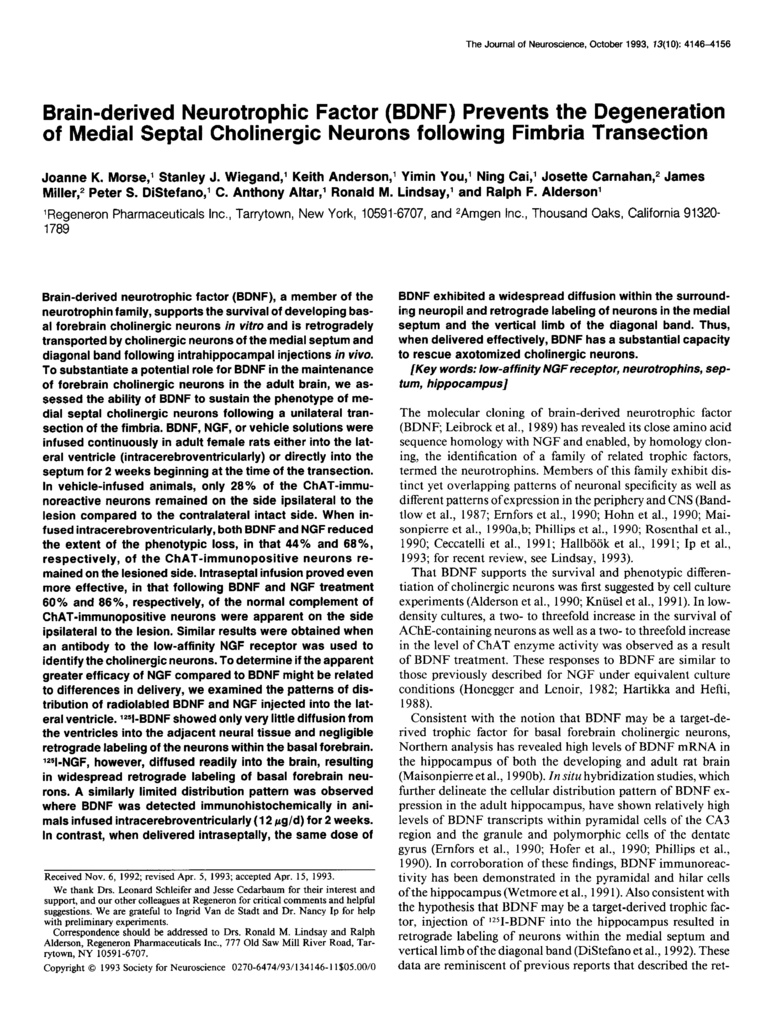
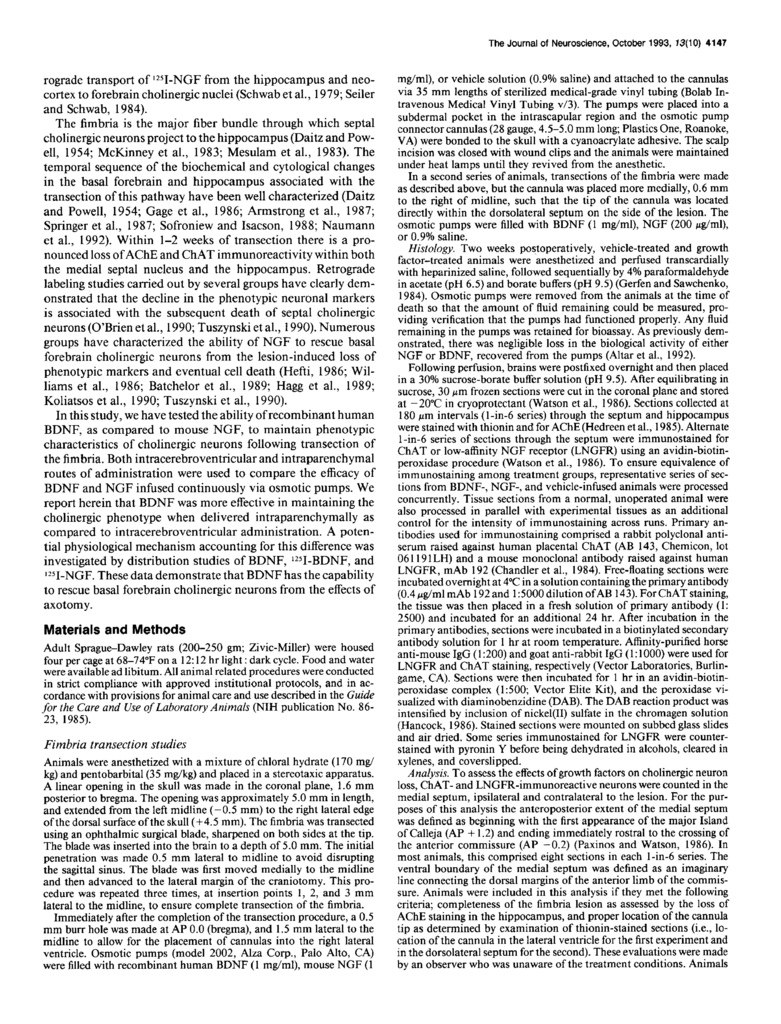
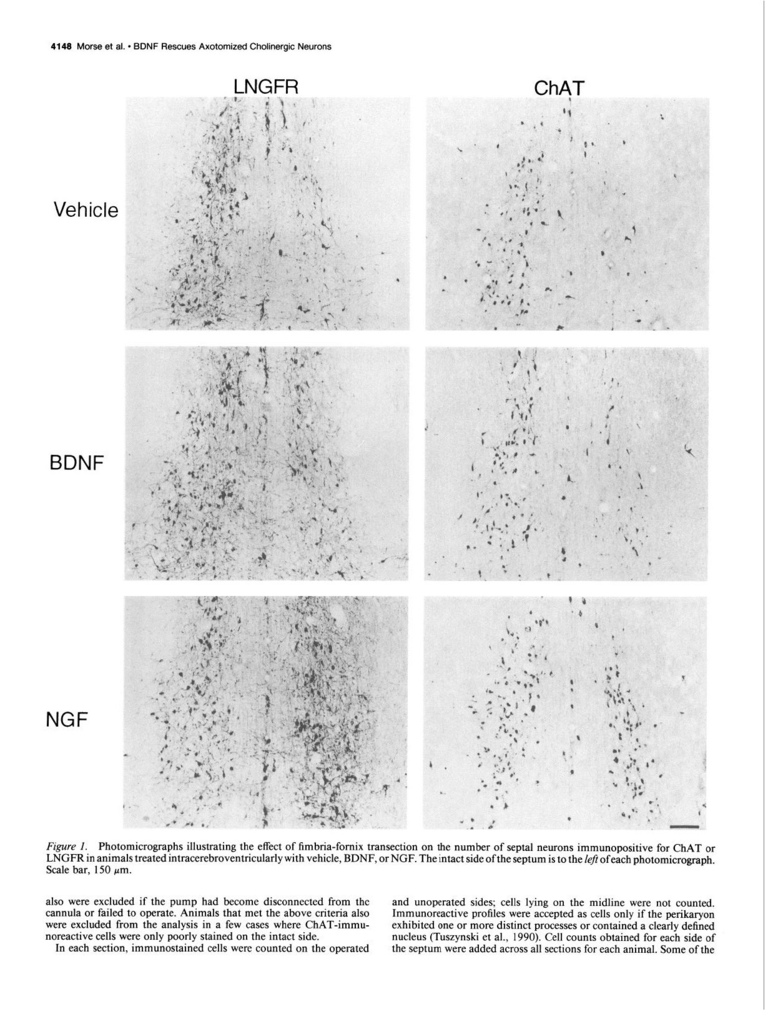

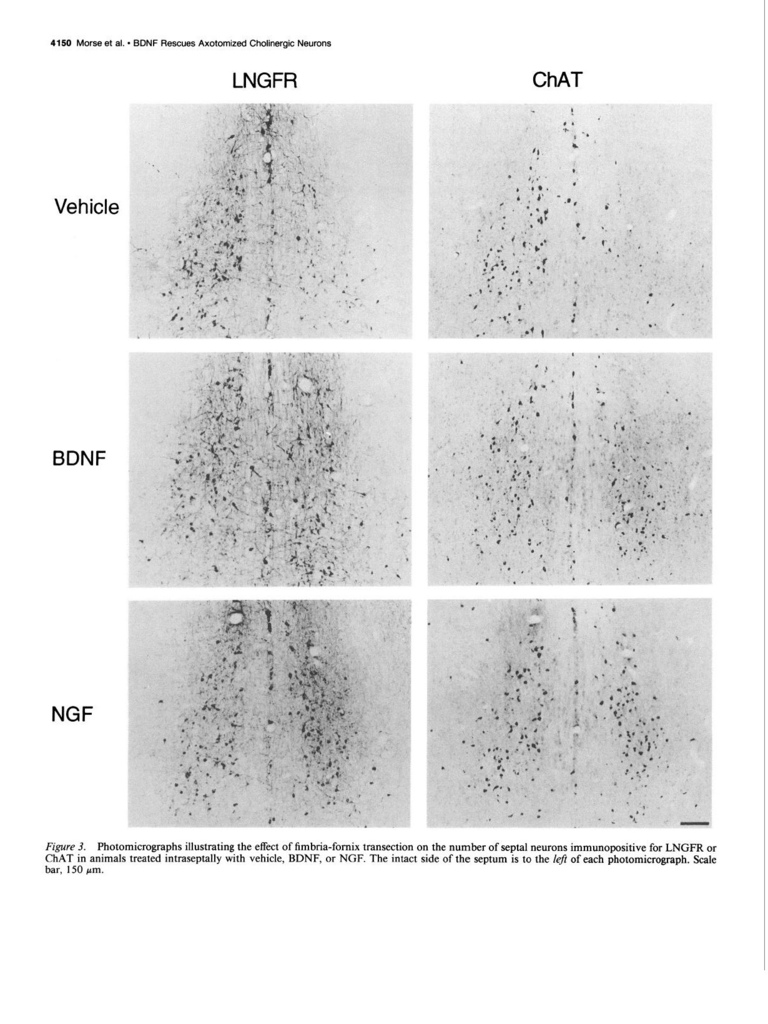
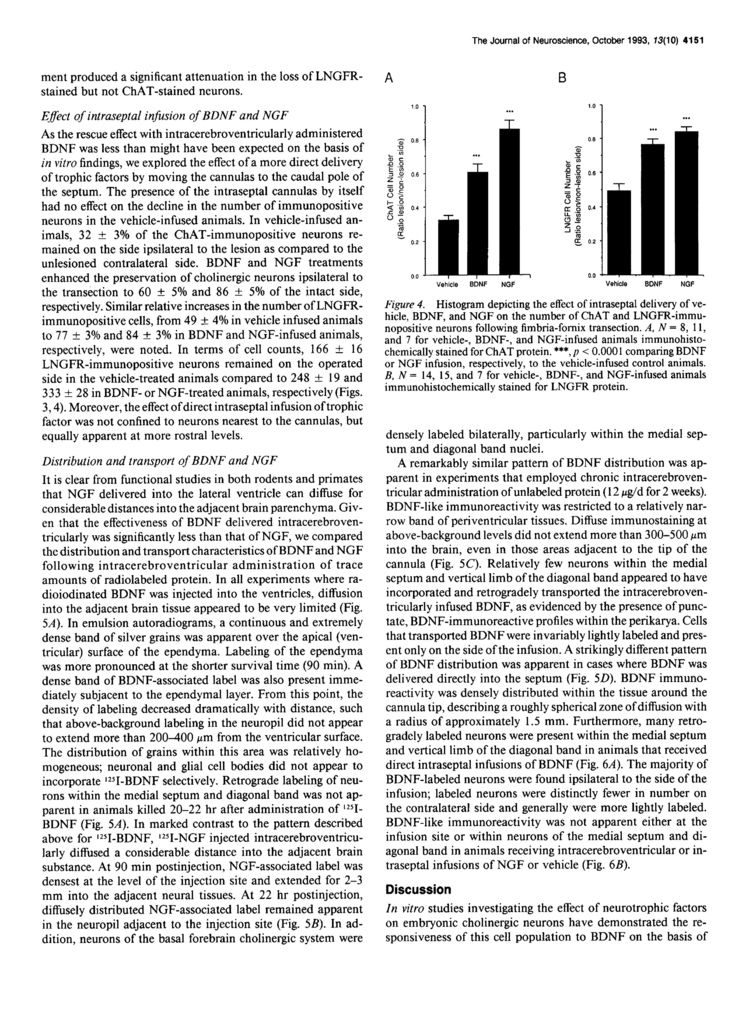

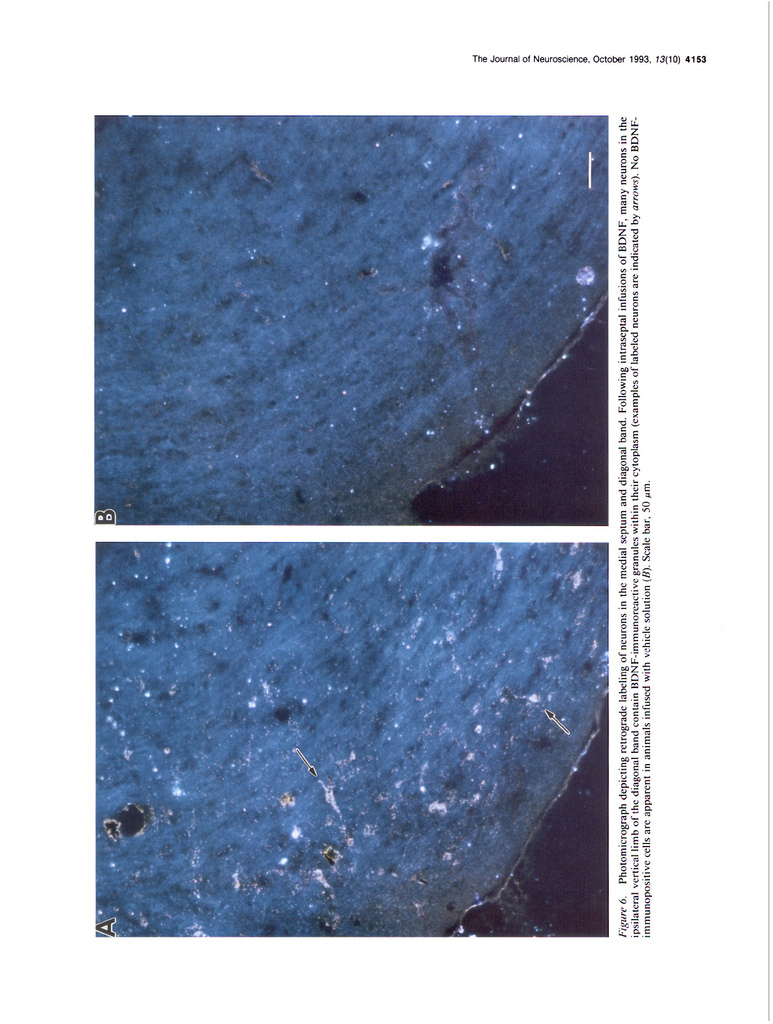
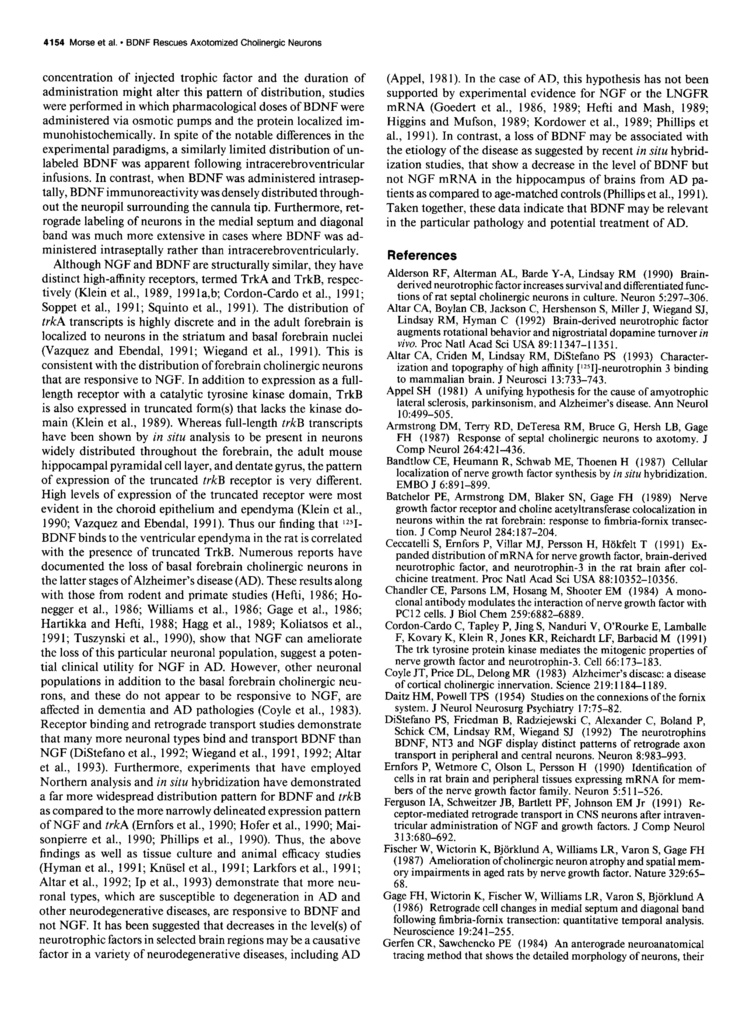
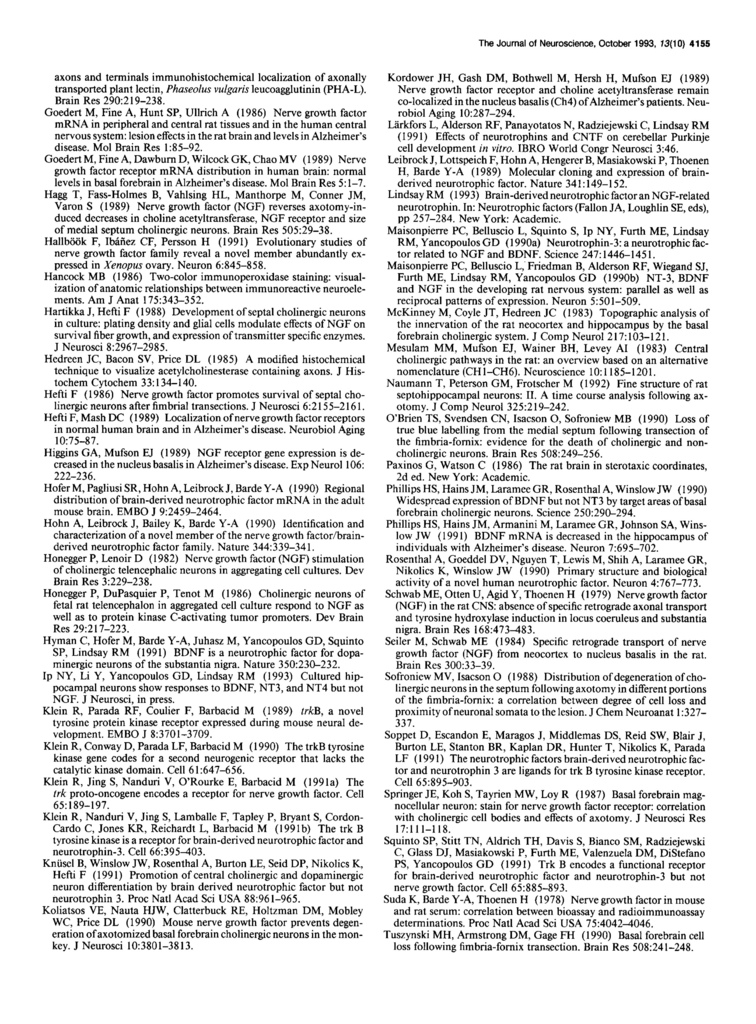
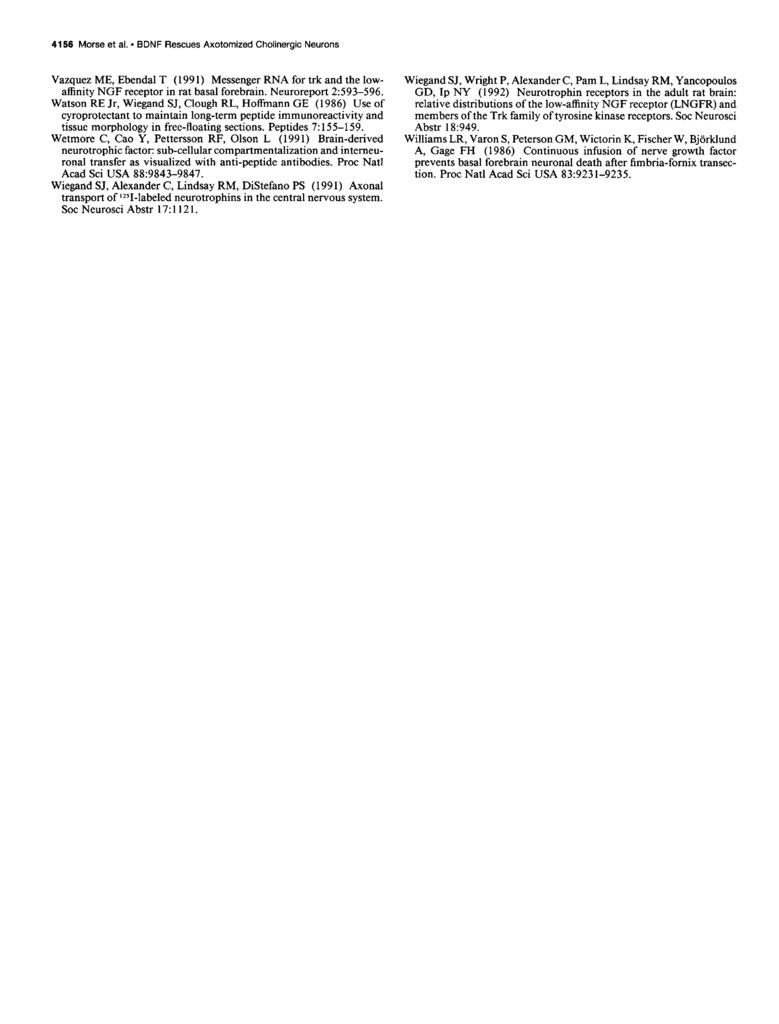



 留言列表
留言列表
 線上藥物查詢
線上藥物查詢 